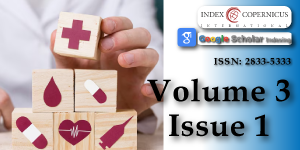The factors associated with mental health and the impact of COVID-19
Main Article Content
Abstract
The mental health impact caused by COVID-19 on adolescents was reviewed, and due to limited data, adult results were included, to support our assertion that additional mental health resources are needed for both adult and young people. Positive gains would include improved socio-emotional skills, a decrease in maladaptive behaviors contributing to the disruption in interpersonal relationships and lifetime achievements, suicide attempts and psychopathology, persistent mental health concerns found in the juvenile justice and foster care systems and substance use addiction later in adulthood (The American Psychological Association, 2019; Garber & Weersing, 2010; Office of Juvenile Justice and Delinquency Prevention, n.d.; Tomasello, 2018;). Geiger & Davis, 2019, found that 13% or 3.2 million United States (U.S.) teenagers aged 12 - 17 years old experienced at least one major depressive episode with the depression rate increasing 59% from 2007 to 2017. Therefore, we assert that developing programs to overcome barriers to mental health aid can reduce instances experienced in adolescence and adulthood.
Article Details
Copyright (c) 2022 Martinez L, et al.

This work is licensed under a Creative Commons Attribution 4.0 International License.
World Health Organization. International. Adolescent mental health. World Health Organization. 2021. https://www.who.int/news-room/fact-sheets/detail/adolescent-mental-health
National Institute of Mental Health. Mental illness.2022. https://www.nimh.nih.gov/health/statistics/mental-illness
Ashworth E. Barriers to access mental health support: Why adolescents don't seek help. National Elf Service. 2020. Retrieved from: https://www.nationalelfservice.net/populations-and-settings/child-and-adolescent/barriers-support-mental-health-adolescents/
Office of Juvenile Justice and Delinquency Prevention. (n.d.). Intersection between mental health and the Juvenile Justice System. https://ojjdp.ojp.gov/model-programs-guide/literature-reviews
Tomasello J. Shining a spotlight on systems-involved youth. American Youth Policy Forum. 2018. https://www.aypf.org/blog/shining-a-spotlight/
Garber J, Weersing VR. Comorbidity of Anxiety and Depression in Youth: Implications for Treatment and Prevention. Clin Psychol (New York). 2010 Dec;17(4):293-306. doi: 10.1111/j.1468-2850.2010.01221.x. PMID: 21499544; PMCID: PMC3074295.
Lam RW, Kennedy SH, Mclntyre RS, Khullar A. Cognitive dysfunction in major depressive disorder: effects on psychosocial functioning and implications for treatment. Can J Psychiatry. 2014 Dec;59(12):649-54. doi: 10.1177/070674371405901206. PMID: 25702365; PMCID: PMC4304584.
Kelly TM, Daley DC. Integrated treatment of substance use and psychiatric disorders. Soc Work Public Health. 2013;28(3-4):388-406. doi: 10.1080/19371918.2013.774673. PMID: 23731427; PMCID: PMC3753025.
Center on the Developing Child. Early childhood mental health (In Brief). 2013. Retrieved from www.developingchild.harvard.edu
American Psychological Association. Child and adolescent mental and behavioral health resolution. 2019. Retrieved from: https://www.apa.org/about/policy/child-adolescent-mental-behavioral-health
Bogusz GB. Health insurers still don't adequately cover mental health treatment. National Alliance of Mental Illness. 2020; Retrieved May 22, 2022: from https://www.nami.org/Blogs/NAMI-Blog/March-2020/Health-Insurers-Still-Don-t-Adequately-Cover-Mental-Health-Treatment
Dobransky KM. Reassessing mental illness stigma in mental health care: Competing stigmas and risk containment. Soc Sci Med. 2020 Feb 15;249:112861. doi: 10.1016/j.socscimed.2020.112861. Epub ahead of print. PMID: 32087486.
Jaworska N, MacQueen G. Adolescence as a unique developmental period. J Psychiatry Neurosci. 2015 Sep;40(5):291-3. doi: 10.1503/jpn.150268. Erratum in: J Psychiatry Neurosci. 2015 Nov;40(6):386. PMID: 26290063; PMCID: PMC4543091.
California Health and Human Services. (2021). Federal and State Health Laws – California Health and Human Services. Retrieved May 5, 2022: from https://www.chhs.ca.gov/ohii/health-laws/
Morse G, Salyers MP, Rollins AL, Monroe-DeVita M, Pfahler C. Burnout in mental health services: a review of the problem and its remediation. Adm Policy Ment Health. 2012 Sep;39(5):341-52. doi: 10.1007/s10488-011-0352-1. PMID: 21533847; PMCID: PMC3156844.
Andersen SL, Teicher MH. Stress, sensitive periods and maturational events in adolescent depression. Trends Neurosci. 2008 Apr;31(4):183-91. doi: 10.1016/j.tins.2008.01.004. Epub 2008 Mar 10. PMID: 18329735.
Geiger AW, Davis L. December 23). A growing number of American teenagers – Particularly girls – Are facing depression. Pew Research Center. 2020. https://www.pewresearch.org/fact-tank/2019/07/12/a-growing-number-of-american-teenagers-particularly-girls-are-facing-depression/.
Monto MA, McRee N, Deryck FS. Nonsuicidal Self-Injury Among a Representative Sample of US Adolescents, 2015. Am J Public Health. 2018 Aug;108(8):1042-1048. doi: 10.2105/AJPH.2018.304470. Epub 2018 Jun 21. PMID: 29927642; PMCID: PMC6050840.
Children and Youth Behavioral Health Specialized Services. Orange County California - Health Care Agency. (n.d.). Retrieved May 22, 2022: from https://www.ochealthinfo.com/about-hca/behavioral-health-services/more-mhrs/children-youth-behavioral-health-cybh/specialized
Fortune Business Insights. (rep.). The U.S. Behavioral Health Market Size, Share & COVID-19 Impact Analysis, By Type (Behavioral & Mental Health, Substance Abuse, Eating Disorders, Trauma, and Others), By Payor (Public Health Insurance and Private Health Insurance/Out-of-Pocket). 2021; Forecast, 2021-2028. , from https://www.fortunebusinessinsights.com/u-s-behavioral-health-market-105298
Shore JH. What is Telepsychiatry? 2020.Retrieved from: https://www.psychiatry.org/patients-families/what-is-telepsychiatry
Baumgartner J, Aboulafia G, McIntosh A. The ACA at 10: How has it impacted mental health care? 2020. Retrieved from: https://www.commonwealthfund.org/blog/2020/aca-10-how-has-it-impacted-mental-health-care
Larsen K. The need for bold action to address our children's mental health. CalMatters. 2022. Retrieved May 10, 2022: from https://calmatters.org/commentary/2022/03/the-need-for-bold-action-to-address-our-childrens-mental-health/
Centers for Disease Control and Prevention (CDC). Facts about suicide. Centers for Disease Control and Prevention. 2022. Retrieved May 10, 2022: from https://www.cdc.gov/suicide/facts/index.html
Czeisler MÉ, Lane RI, Petrosky E, Wiley JF, Christensen A, Njai R, Weaver MD, Robbins R, Facer-Childs ER, Barger LK, Czeisler CA, Howard ME, Rajaratnam SMW. Mental Health, Substance Use, and Suicidal Ideation During the COVID-19 Pandemic - United States, June 24-30, 2020. MMWR Morb Mortal Wkly Rep. 2020 Aug 14;69(32):1049-1057. doi: 10.15585/mmwr.mm6932a1. PMID: 32790653; PMCID: PMC7440121.
Centers for Medicare & Medicaid Services (CMS). CMS Manual System Pub. 100-07 State Operations Provider Certification. Department of Health & Human Services. 2008; Retrieved May 5, 2022: from https://www.cms.gov/Regulations-andGuidance/Regulations-and-Guidance
Destinations For Teens Mental Health Treatment Center. (n.d.). Retrieved May 10, 2022: from https://www.destinationsforteens.com/adolescent-teen-mental-health-treatment/
Reinert M, Fritze D, Nguyen T. The state of mental health in America 2022. Mental Health America. 2021. Retrieved from: www.hhanational .org.

